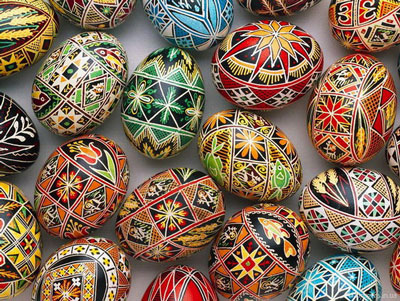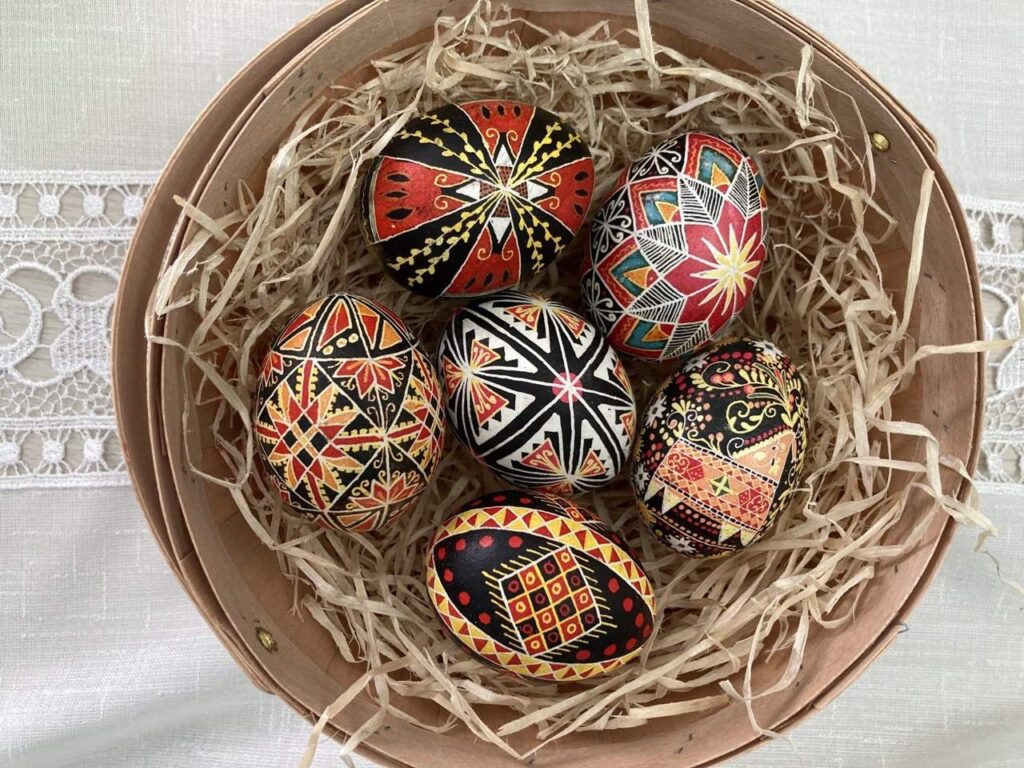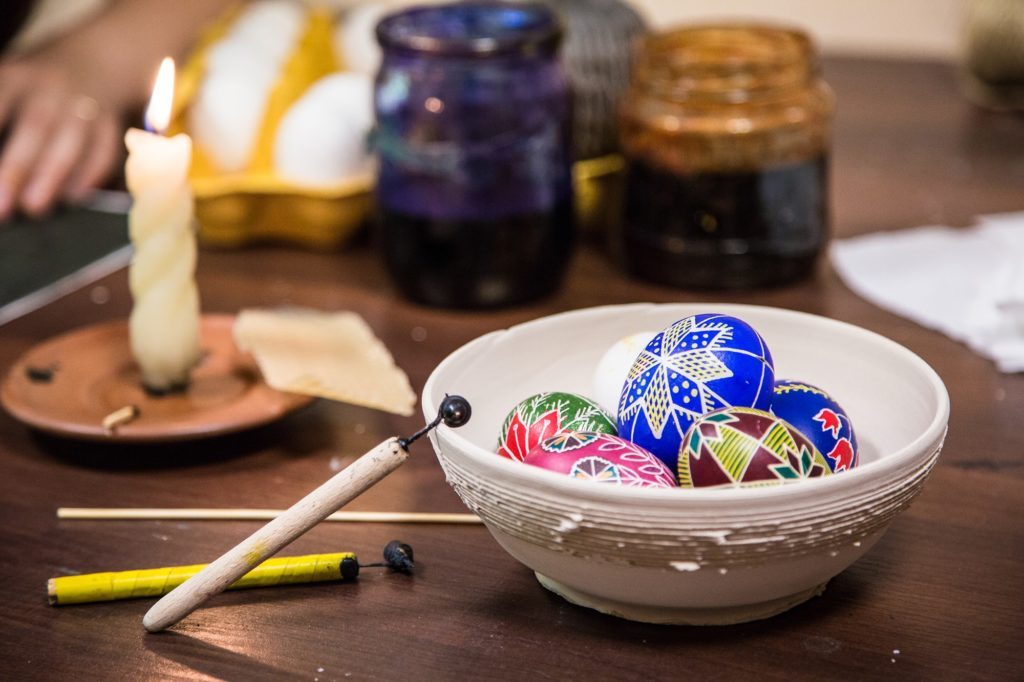By Maria Shmyrova

I have created my own pysanka during my trip to Odessa, Ukraine last year. The purpose and intention was abundance and prosperity as you notice a spider web pattern on the egg colored in green. It was my first experience of traditional egg decoration. It was not perfect but I enjoyed a very calm and focused state of mind while doing it. I deeply connected to the sacred meaning of the process with the help from the local Ukrainian artist and healer. She gently guided the process through prayer and explanation of every step. My pysanka stood out to her. It was unusual that the egg remained hot to touch long after the process was complete. Apparently, it means I have access to and can channel great amount of life force energy to make anything happen. I believe it is true for all of us. I thank wisdom keepers of Ukraine for giving me this opportunity to reconnect and remember the importance of tradition and ritual. I have offered my pysanka to the sands, to the water, to the earth in prayers for abundance and peace to be resurrected in our native lands of Eastern Europe and the world for we are all connected.

In ancient Slavic mythology, an egg has always been a sacred symbol of the origins of all life, rebirth, and fertility. Pagan Slavic tribes believed eggs carried the power of all creation and unity of the divine feminine and the divine masculine. The narrow top part of the egg was believed to represent the Sun, and the wider end represented the Moon. For Slavs egg also depicted the holy family union between husband and wife that has no beginning or an end represented by the round shape of an egg. This belief gave birth to many sacred rituals that involved eggs, including egg decoration. In pre-Christian era the art of egg decoration was not tied to a specific time of the year, rather it was carried out as a prayer and dedicated ritual practice all year around for various purposes. Pysanka eggs were created with intentions of healing, abundance, protection, and fertility. People gifted each other with pysanka eggs as magic amulets and power attributes for various life occasions.
The process of pysanka creation was regarded as a purification ritual eliminating doubts and fears of making a mistake in the sacred pattern creation as well as day-to-day life. According to the tradition, only raw eggs were used for decoration by all women who were taught the tradition from young age. Eggs decorated in a state of distress or illness were buried deep in the ground or burnt as an offering. Oftentimes, those eggs would burst amidst the process of decoration or rot the following day after completion having absorbed all the negative energy. Thus, it was believed that the ritual was only to be carried out in a calm state and clear mind for the amulet to gain its magic powers.
The geometry of symbols and sacred patterns are deeply rooted in the mystery of our collective unconscious:
Triangles – family symbol (father, mother, child), spiritual (Father-Mother God and Holy Spirit), elemental (earth, air, fire)
Circles – meaning of life and self-searching
Grids – symbol of interlace between challenges and triumphs in destiny, evil and good
Rings – symbols of maternity and learning
Crosses – the symbol of four directions, four seasons, and the universe
Spirals – the symbol of cyclical nature of life, life force and evolution
Waves – the symbol of water and eternity
Trees – the symbol of unity of life
Birds – the symbol of fertility and resurrection
Moose – life force!
Slavic mythology of pysanka gives meaning to every detail of the process involved in it:
Colour red is associated with fire and blood – life, joy, hope, love
Colour yellow is associated with the moon, sun and the stars – harvest, abundance, warmth
Colour blue is associated with the sky, water and air element – health
Colour green is associated with Mother nature – resurrection, fertility, abundance, prosperity and generosity
Colour brown is associated with the earth element – the power of creation
Color white and black is associated with spirit – honoring the circle of life and death, honoring ancestors and their support from beyond the veil
